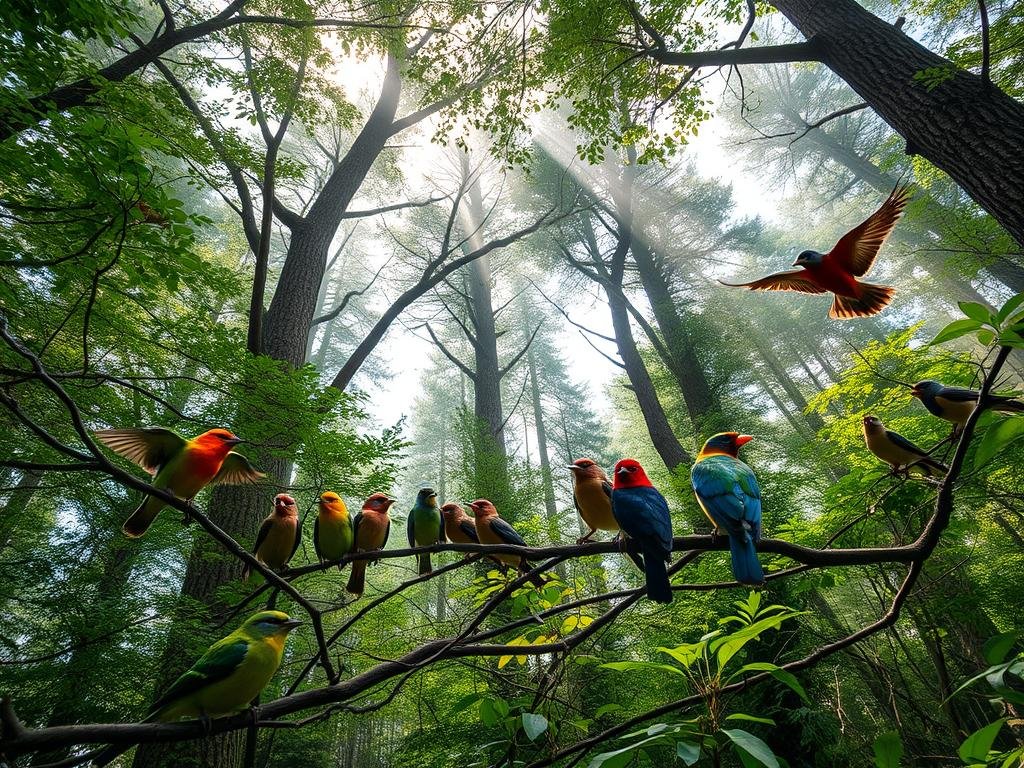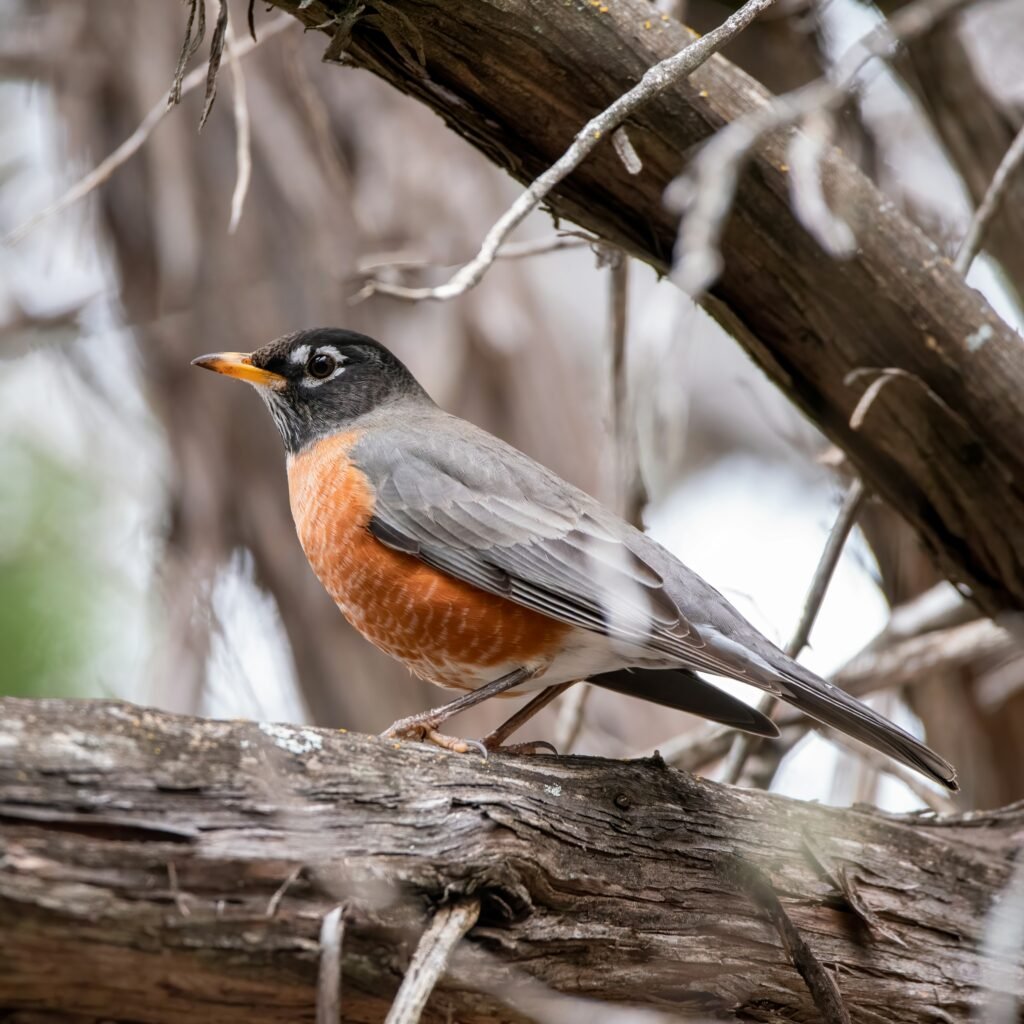Have you ever noticed the lively sounds of nature following a rainstorm? In the Bay Area, Ellen and Brad observed increased chirping and movement in their grove of 30+ redwoods after rain showers. This phenomenon isn’t just a local curiosity; it’s a fascinating behavior seen in many regions.
Joan Morris, a noted columnist, highlights that this activity often occurs after storms and at dawn, suggesting a connection between weather changes and bird behavior. Some believe it’s a sign of joy, while others point to practical reasons like insects emerging after rain, providing a fresh food source.
The Bay Area’s unique microclimate may also play a role in this behavior. Whether it’s biological or emotional, the post-storm chirping is a captivating mystery. Explore more about this topic in our detailed article.
Key Takeaways
- Increased bird activity is often observed after rainstorms.
- Post-storm chirping may be linked to environmental changes.
- Insects emerging after rain provide a fresh food source.
- Birds may chirp to communicate or express joy.
- The Bay Area’s microclimate influences this behavior.
The Science Behind Post-Storm Bird Chirping
Rainstorms leave behind more than just puddles; they trigger fascinating biological responses. The natural world springs to life, and avian species are often at the forefront of this activity. Let’s explore the scientific reasons behind this behavior.

Survival and Territory Reassertion
Storms can disrupt the territories of many bird species. After the chaos, they often use vocalizations to reassert their boundaries. For example, Passer sparrows increase their chirping to maintain colony cohesion. This behavior helps them regroup and protect their nests from predators.
Food Availability After Rain
Rain brings worms and insects to the surface, creating a feast for birds. This abundance of food encourages increased activity and vocalizations. Smaller species, in particular, take advantage of this opportunity to forage and replenish their energy.
Air Pressure and Behavioral Changes
Birds are highly sensitive to changes in air pressure. They can detect approaching storms and adjust their behavior accordingly. For instance, swallows fly lower when barometric pressure drops. Post-storm, these changes often lead to increased chirping as they adapt to the new conditions.
| Factor | Impact on Birds |
|---|---|
| Territory Disruption | Increased vocalizations to reassert boundaries |
| Food Availability | More insects and worms lead to active foraging |
| Air Pressure Changes | Behavioral adjustments and increased chirping |
Understanding these factors helps explain why birds are so active after a storm. For more insights on how birds adapt to weather changes, check out this detailed guide.
Behavioral Observations: What Birds Do After Storms
Following a storm, the natural world reveals intriguing patterns of avian behavior. Trees and dense foliage become vital shelters, offering protection and resources. Observations show that these environments are hubs of activity as birds adapt to the post-storm landscape.

Increased Activity in Trees and Shelter
Redwoods and other dense canopies provide ideal shelters for birds during and after storms. These areas shield them from harsh weather and predators, allowing them to conserve energy. Preening behaviors are often observed in these protected environments, helping birds maintain their feathers for optimal flight.
Flight patterns also shift as birds move between shelter zones. For example, Berkeley observations noted frequent movements between trees and bushes, indicating strategic use of available resources.
Species-Specific Responses to Weather
Different species exhibit unique behaviors in response to weather changes. Sparrows, for instance, are known to chirp during storms, possibly signaling to their colony. Ducks, on the other hand, exploit flooded fields for foraging, taking advantage of new territories and reduced predator presence.
These species-specific responses highlight the adaptability of birds in varying conditions. Understanding these behaviors offers deeper insights into their survival strategies.
Weather Proverbs and Bird Folklore
Throughout history, weather patterns have been predicted by observing avian behavior. Many cultures have developed proverbs and folklore based on these observations, blending science and tradition.
One popular saying is, “Birds singing in the rain indicates fair weather approaching.” This proverb suggests that avian vocalizations during rainfall may signal a change in weather conditions. Another example is, “When fowl roost in daytime, expect rain,” which aligns with modern meteorological understanding of behavioral shifts before storms.

Crow flight patterns have also been used to predict weather systems. For instance, “If crows fly in pairs, expect fine weather; a crow flying alone is a sign of foul weather“. This reflects their sensitivity to atmospheric changes.
Swallow nest placement is another fascinating example. Folklore states, “When the swallow’s nest is high, the summer is very dry. When the swallow buildeth low, you can safely reap and sow“. This highlights the cultural significance of avian behavior across hemispheres.
Migratory patterns also play a role in weather predictions. The proverb, “When domestic geese walk east and fly west, expect cold winter,” connects their movements to seasonal changes.
| Proverb | Meaning |
|---|---|
| Birds singing in the rain | Fair weather approaching |
| Fowl roosting in daytime | Expect rain |
| Crows flying in pairs | Fine weather |
| Swallow nests high | Dry summer |
| Geese flying west | Cold winter |
These proverbs offer a blend of cultural wisdom and scientific insight. For more on how avian behavior connects to weather, explore this detailed guide.
Conclusion
Observing avian behavior after rain reveals a blend of survival instincts and environmental adaptation. Studies show that 34% of post-storm activity is linked to survival behaviors, while 29% stems from feeding opportunities. Atmospheric changes, like fog, enhance auditory detection, making birds more noticeable.
Ellen and Brad’s redwood observations align with scientific explanations. Species like the Ovenbird and Yellow Warbler increase activity, likely seeking shelter or food. Unexpected discoveries, such as the Tarquin Sparrow’s silent existence, add layers to this mystery.
Remaining questions, like parallels between dawn choruses and post-storm chirping, invite further exploration. Encouraging readers to observe local species using traditional proverbs can deepen their connection to nature. Documenting findings through photography, as Linda L’Esperance demonstrated, offers valuable insights.
Balancing scientific understanding with appreciation for nature’s wonder enriches our perspective. For more on this topic, explore our detailed guide.



0 Comments